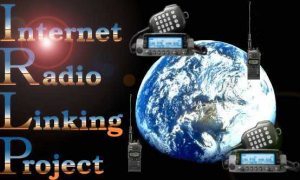
Your Guide to the “25”
IRLP Node 3093
Here are some photos of the Install
IRLP stands for Internet Radio Linking Project. Most of us are familiar with linked repeaters here in the southwest. The IRLP creates a linked repeater, but instead of using an RF link between repeaters, it uses an Internet connection. Each of these IRLP equipped repeaters are referred to as a “NODE”. You can establish a Link between two nodes, simply by dialing (on your DTMF Pad) the node number. A polite voice will come on your radio and tell you the node is connected.
Try connecting to the N5BBD node in Truth or Consequences. (Pat
N5BBD did the computer work, Paul WA5IHL did the radio work for the
1. First, tune into the 145.25 repeater, and listen to assure that it is not in use.
2. If the repeater is idle (no QSO in progress) key your mic and let the repeater identify.3. After the CW ID, identify yourself on the repeater. Listen carefully to the courtesy beep when you UN-key your mic. A single “beep” indicates that the repeater is in stand-alone mode, or NOT connected to any other node. If you hear a two-tone courtesy beep, it indicates the NODE is connected already to another node.
4. Assuming the node is available (not connected), key your mic and dial “ 3409 “ on your microphone DTMF pad.
5. When you UN-key your mic, you will hear the courtesy beep, followed by another tone. The repeater will UN-key for a couple of seconds, and then it will come back on. You will hear a voice tell you that the node is ready for use. Some of the node greetings are quite elaborate.
6. Again, announce your call sign (as you are now connected to another repeater) and make your call as either “monitoring” or call an individual person.
7. Remember now, you are using a link system. It may take a second or two to get your voice down the line to the remote repeater. It has to be digitized through an A/D Converter, sent as an IP Packet over the Internet, and then converted from digital to analog through a D/A Converter, before it can be rebroadcast over the remote repeater. This process is called VOIP, which stands for “Voice Over Internet Protocol.” What that means is leave plenty of time after YOUR courtesy beep for the other person to answer.
8. When you have completed your conversation, sign off using your call sign just as you normally would. Then announce your intention to disconnect the node, and dial code “ 73 “ to disconnect
9. Earlier, we assumed that the node was available, and dialed into the “3409” node. But, what if it was not available, and we heard the two tone courtesy beep? We have two choices really. If you are sure the node is not being used (by listening for a couple of minutes for traffic), you can give your call sign, and just dial the “ 73 “ disconnect code. Then the node will disconnect from wherever, and you can make your call. Congratulations, you have just completed your first IRLP contact. That was not’t too hard, was it?
PLEASE DO NOT CONNECT AND DISCONNECT
RIGHT AWAY A
The website at www.irlp.net will provide you with some useful information. Also, status.irlp.net will tell you which “nodes” are online at a given time.
IRLP Reflectors
The example given above creates a one to one connection between any two IRLP
nodes. But, lets say that we want to have a “Southwest Net” meeting on the repeater. We would like
to link
Echo-Link is another VOIP program in use by amateur radio operators. It can be operated radio to radio as above; but, it has to ability to allow a computer user to become a node. For more information on echolink visit www.echolink.org Therefore, you can talk radio to radio, computer to radio, or computer to computer, on the Echolink system. A little bit more sophistication, but from the “radio” side, it is just as easy as an IRLP node; the only difference is you dial a pound sign, “ # “ , in front of the Echolink node number. The “73” command remains the same.
So, there is some of the technical stuff you should know about the system. For instance, you would like your friends to be able to call you back. They need to know your node number. So, here is some of the technical stuff:
Repeater Frequency: 145.250 -.600 offset
Repeater PL: 88.5 encode & decode
IRLP Node Number: 3093
Echolink Node Number: 313977
Disconnect Command: 73
Last Modified:
By: Patrick Johannik N5BBD